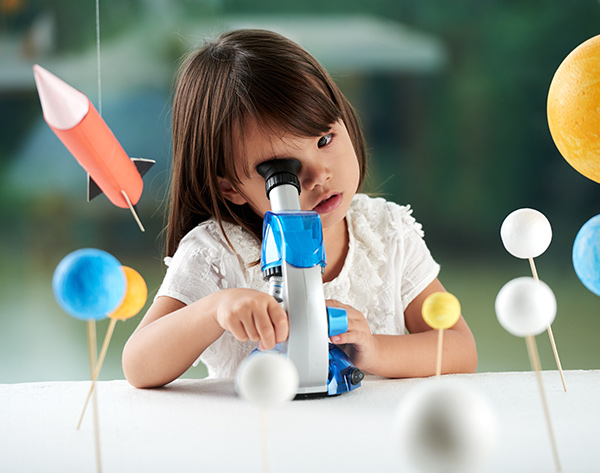In today’s technology-driven world, cultivating an interest in Science, Technology, Engineering, and Mathematics (STEM) is crucial for children’s future success. STEM education equips kids with the critical thinking skills, problem-solving abilities, and creativity necessary to thrive in an increasingly complex and interconnected world. Fortunately, parents can encourage their kids’ curiosity and love for STEM through engaging and straightforward activities right in the comfort of their homes.
Simple yet Stimulating STEM Activities for Fun and Learning
Here are some simple yet stimulating STEM activities that promise fun and learning:
Plant Observation and Growth
Planting seeds and observing their growth is a classic STEM activity that introduces kids to the wonders of biology and the life cycle of plants. It’s a fantastic way to foster responsibility and environmental awareness.
Materials:
- Seeds
- Potting soil
- Small pots or containers
- Water
- Sunlight (a sunny windowsill or outdoor space)
Instructions:
- Fill the pots with potting soil and plant the seeds according to the instructions on the seed packet.
- Water the pots regularly and place them in a sunny spot.
- Observe the seeds as they sprout and grow. Encourage kids to keep a journal to record their observations, including the date, plant height, and any changes they notice.
Learning Outcomes:
- Understand the basics of plant growth and development.
- Learn about the importance of sunlight and water for plant survival.
- Develop responsibility and care for living things.
- Foster environmental awareness
Rainbow Milk Experiment
This mesmerizing experiment demonstrates the concept of surface tension and the interaction between soap molecules and fat molecules. Kids will be amazed as the colours swirl and dance in the milk.
Materials:
- Plate or shallow dish
- Milk
- Food colouring (red, blue, yellow, green, etc.)
- Cotton swabs
- Liquid dish soap
Instructions:
- Fill the plate with milk.
- Add drops of different food colouring to the milk, creating a colourful pattern.
- Dip a cotton swab into liquid dish soap and touch the tip of the swab to the surface of the milk.
- Observe as the colours swirl and dance, creating a mesmerizing rainbow effect.
Learning Outcomes:
- Understand the concept of surface tension and how it affects liquids.
- Explore the interaction between soap molecules and fat molecules.
- Observe the effects of different variables on the experiment, such as the amount of soap used or the type of food colouring.
- Develop creativity and problem-solving skills.
Build a Simple Solar Oven
This practical experiment demonstrates the concept of solar energy and its ability to convert light into heat. Kids will learn how to construct a simple solar oven using cardboard and aluminium foil.
Materials:
- Cardboard box (shoebox or cereal box)
- Aluminium foil
- Black paper or paint
- Thermometer
- Clear plastic wrap (optional)
- Small food items (e.g., marshmallows, chocolate chips)
Instructions:
- Line the inside of the cardboard box with aluminium foil, making sure it reflects light effectively.
- Cut a hole in the top of the box and cover it with clear plastic wrap (optional).
- Paint or cover the outside of the box with black paper or paint to absorb heat.
- Place the food items inside the box and position the solar oven in direct sunlight.
- Use a thermometer to monitor the temperature inside the box as the food cooks.
Learning Outcomes:
- Understand the concept of solar energy and its conversion into heat.
- Explore the properties of different materials in absorbing and reflecting sunlight.
- Develop problem-solving skills in designing and constructing a solar oven.
- Experiment with the effects of different variables on the oven’s performance, such as the angle of the sun or the type of food.
- Experience the satisfaction of using solar energy to cook food.
These are just a few examples of the many engaging STEM activities that can be done at home with simple materials. By encouraging kids to explore and experiment, parents can nurture their curiosity and lay the foundation for a lifelong love of STEM.








